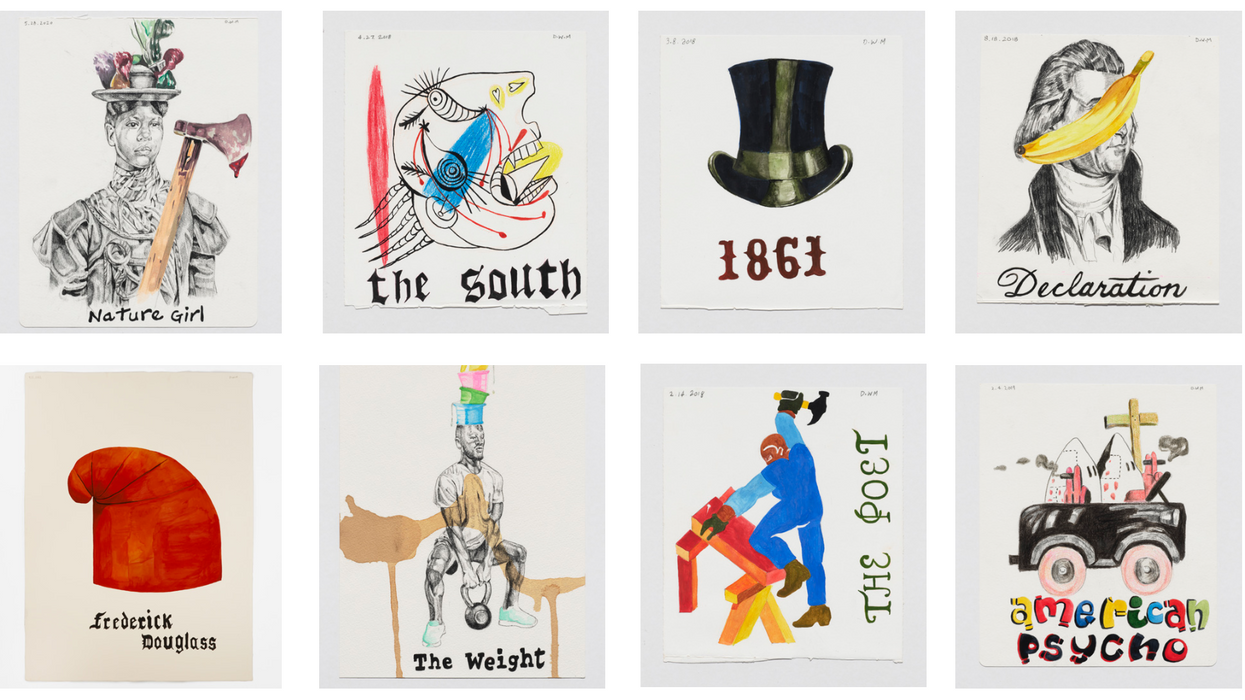Opening Saturday, a New Inman Gallery Exhibit Shows the Good Fortune of Treasured Artist David McGee

A selection of McGee's 'Tarot Cards'
AN EXHIBITION BY Houston-based artist David McGee is always a cause for celebration. A master of portraiture, modernism and abstraction, with works in the permanent collections of museums across the country, McGee, like many artists, clung to his practice like a lifeline throughout the worst months of the pandemic and the political upheaval that still plagues the country today. His new and highly anticipated show at Inman Gallery, The Tarot Cards and The Gloria Paintings (Sept. 16 – Nov. 1), is infused with that resilience, and is his most politically charged, and deeply personal exhibition to date.
Reigning over the exhibit are four, large-scale watercolor portraits of elegantly gowned Black women, all surrounded by exotic birds — including parrots, a recurring symbol in historical painting — and gigantic butterflies. On each canvas, the subject is pushed forward, as if onstage, and seems to be prepared for battle. “They are women fomented by the fire of injustice, and are in control of their own destiny,” says McGee. “They have embraced their future and their past.”
These equanimous women, each an amalgamation of figures from McGee’s imagination, first materialized in his tarot cards. Beautifully rendered in watercolor, ink and graphite, The Tarot Cards speak to McGee’s career-long obsession with image and language, and in our time of false narratives and virtual political realities, are designed to inspire some deeper thinking by first scrambling the viewer’s brain. In “Nature Girl,” a young Black woman in a gothic, high neck Victorian dress, her spine as straight as a soldier’s, holds a bloodied ax just to the left of her thousand-yard-stare. Two other cards, titled “The South” and “The North,” feature McGee’s variations on the screaming heads in Picasso’s 1937 anti-war masterpiece “Guernica,” and draw an uncomfortable parallel between the Civil War and how art history is narrated in the West.

'The Anointed'

One of 'The Gloria Paintings'
As a respite from the sensory overload of the tarot cards, Inman has dedicated an entire room to The Gloria Paintings, a series McGee began in the early months of the pandemic, when his mother Gloria was diagnosed with cancer. Hung together, these abstract, but somehow familiar shapes, reminiscent of foliage, clouds, and musical notes, realized in thickly applied oil brushstrokes on burlap, immerse the viewer in an unabashed celebration of ocular pleasure. “When the pandemic hit, I wanted to make a bouquet for my mother,” says McGee of The Gloria Paintings. “They are all about the joys of flowers and nature, and the plumage of life. I don’t know if these pictures were for Gloria or for me!” Now cancer-free, Gloria remains “a fountain of support and sustenance” for McGee.
Having come through the trauma of the past three years, and with a major retrospective of his work scheduled for 2025 at Charlotte's Bechtler Museum of Modern Art, McGee is sanguine about the future.
“You just have to do the best you can with the time you have.”
- This Week at Lawndale: See How Pianist Jason Moran Used His Instrument to Make a Different Kind of Art ›
- The Most Wanted ›
- A Beloved Artist Brings Joy to His Cancer-Fighting Mom by Dedicating Paintings to Her, Over and Over ›















